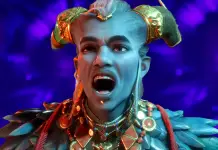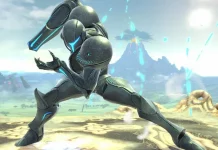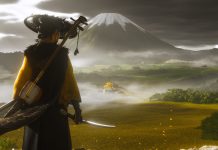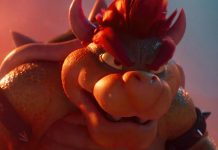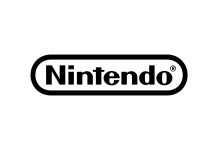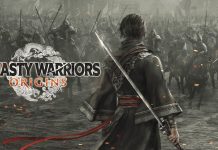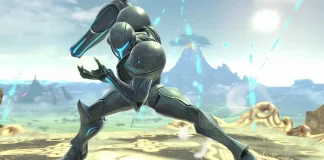I’m going to start with a personal anecdote. In 2017, when I started writing here, the first assignment I received was to review Dragon Quest Heroes II. A franchise I was familiar with at the time, but a type of game that, at the time, I hadn’t tried: the “musou”. Since then, I have been reviewing every title of the genre that came to the editorial office and, although I wouldn’t say I’m an expert or a die-hard fan of the proposal, I enjoy it enough and appreciate the (subtle) differences between one game and another of the same style beyond its artistic design.
Perhaps at this point someone needs a definition of a “musou” video game, and beyond the Japanese translation for “the one and only” or “incomparable”, we find ourselves with an extreme variant of hack and slash, where a single character (the hero) takes on hordes of enemies (against hundreds, or even thousands of enemies) while facing off against other heroes in large, epic battles. A premise that Koei Tecmo and Omega Force has been exploiting and fine-tuning for decades, starting with one series in particular: Dynasty Warriors. The series has replayed the epic Romance of the Three Kingdoms for console generations, with each iteration adding a new detail: heroes, weapons, level design, new abilities… but the essence remained the same, both in this and the other series. And now the team has returned to its origins to create what they promise is a new beginning. Dynasty Warriors: Origins looks incredible and sets a new technical ceiling for a genre that already has optimisation as its hallmark. But, at the same time, it retains some of its most criticised and redundant points, keeping it caged in that hidden niche that is so hard to break out of outside of Japan.
Dynasty Warriors: Origins returns, once again, to immerse us in the power struggle and political intrigues narrated in the novel The Romance of the Three Kingdoms. A historical tale that straddles fact and fiction, detailing the convulsive decline of the Han dynasty in China and the rise of three kingdoms vying for dominance of the empire. Here we take control of a nameless warrior who has lost his memory and who, as fate would have it, finds himself caught up in the beginning of the Yellow Turban revolt. From there, he will meet a huge cast of characters and historical figures with whom he will fight, sometimes as an ally and sometimes as an enemy, on huge battlefields of realistic aesthetics.
This is an ad:
To start somewhere, Dynasty Warriors: Origins’ greatest achievement has been to elevate the concept of battles to a new level. There are thousands of enemies on screen at the same time, fighting in an organised and coordinated fashion. Heroes on both sides give orders that the rank-and-file troops follow in formation, and that gives weight to the mass of soldiers that usually only served to get in the way as you move from one objective to another on the map. It’s not a paradigm shift either, but perhaps now there are more moments to consider a “strategic retreat” in another direction as you look for an alternative way around the army in front of you.
Swiping and slashing your way through is still rewarding, and now we’ll also have some subsystems for battles against unique enemies that make them a little more engaging. Deflections, Counterattacks, and Arts (skills) vary with each of the nine weapon types you unlock in the game. And the best thing is that during the battle we can switch between them at will from the pause menu, taking advantage of their strengths in each situation. For example, a sword works well in duels or against single enemies, but the Pudao or Double Halberds are much more effective against large groups. And then there are, of course, the Musou attacks: charged skills that can turn a battle if saved for the right moment. Visually, Dynasty Warriors: Origins is flawless in this regard, and every hit and special move is a joy to behold.
This is an ad:
It’s the big battles that set the pace for the game’s five chapters, but there are also the Skirmishes, small scenarios of simple objectives that appear infinitely across the map. These smaller scenarios are ideal for testing and upgrading weapon stats, and also for improving your skills or training specific tactics. And with this we also have the fact that Origins can take much longer than other games of its kind, reaching or even exceeding 100 hours, if you want to see all the content and the various endings. Personally, I’ve always felt that the story is the least important thing in this type of game, so if you’re looking for the pure action experience, you’ll probably be satisfied with 25-30 hours on the first playthrough.
What’s the main problem with Dynasty Warriors: Origins? Again, clinging to a story that doesn’t sit well with the mainstream western audience, full of totally unplayable cutscenes (in fact, you can skip the cutscenes entirely and it will be just as enjoyable), and also a pace of gameplay that can saturate you in just a few hours, seeing little to no progression in your playstyle. You can literally reach the end with the same skills you get in the first three hours of gameplay, and by replacing equipment and weapons with the next higher model you find in the shop or in the next battle, the whole system is redundant and quite unnecessary. The best way I see to enjoy it without giving up is to do a couple of big battles per session interspersed with several skirmishes.
If you’re a lover of the musou genre, this is a must-have title for you. But if this is going to be your first time playing this type of game, it’s good to know that repetition and “routine” combat is part of it. In any case, you will feel like a truly “unique” hero.



